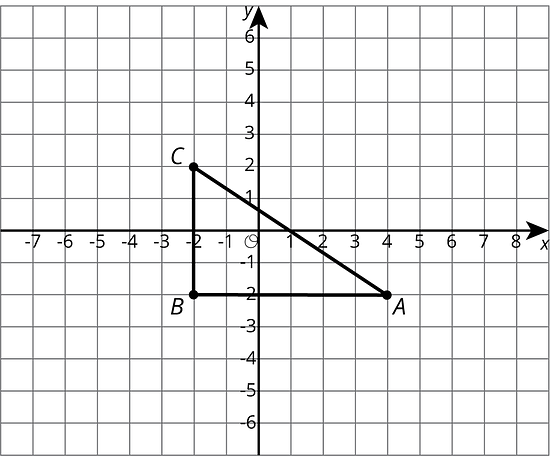Lesson 5More Dilations
Let’s look at dilations in the coordinate plane.
Learning Targets:
- I can apply dilations to polygons on a rectangular grid if I know the coordinates of the vertices and of the center of dilation.
5.1 Many Dilations of a Triangle
Explore the applet and observe the dilation of triangle . The dilation always uses center , but you can change the scale factor. What connections can you make between the scale factor and the dilated triangle?
5.2 Info Gap: Dilations
Your teacher will give you either a problem card or a data card. Do not show or read your card to your partner.
If your teacher gives you the problem card:
- Silently read your card and think about what information you need to answer the question.
- Ask your partner for the specific information that you need.
- Explain to your partner how you are using the information to solve the problem.
- Solve the problem and explain your reasoning to your partner.
If your teacher gives you the data card:
- Silently read the information on your card.
- Ask your partner “What specific information do you need?” and wait for your partner to ask for information. Only give information that is on your card. (Do not figure out anything for your partner!)
- Before telling your partner the information, ask “Why do you need that information?”
- After your partner solves the problem, ask them to explain their reasoning and listen to their explanation.
Are you ready for more?
Triangle was created by dilating triangle using a scale factor of 2 and center . Triangle was created by dilating triangle using a scale factor of and center .

- What would the image of triangle look like under a dilation with scale factor 0?
-
What would the image of the triangle look like under dilation with a scale factor of -1? If possible, draw it and label the vertices , , and . If it’s not possible, explain why not.
-
If possible, describe what happens to a shape if it is dilated with a negative scale factor. If dilating with a negative scale factor is not possible, explain why not.
Lesson 5 Summary
One important use of coordinates is to communicate geometric information precisely. Let’s consider a quadrilateral in the coordinate plane. Performing a dilation of requires three vital pieces of information:
- The coordinates of , , , and
- The coordinates of the center of dilation,
- The scale factor of the dilation
With this information, we can dilate the vertices , , , and and then draw the corresponding segments to find the dilation of . Without coordinates, describing the location of the new points would likely require sharing a picture of the polygon and the center of dilation.
Lesson 5 Practice Problems
Quadrilateral is dilated with center , taking to . Draw .

Triangles and have been built by dilating Triangle .

- Find the center of dilation.
- Triangle is a dilation of with approximately what scale factor?
- Triangle is a dilation of with approximately what scale factor?
- Triangle is a dilation of with approximately what scale factor?
Here is a triangle.
- Draw the dilation of triangle , with center , and scale factor 2. Label this triangle .
- Draw the dilation of triangle , with center , and scale factor . Label this triangle .
- Is a dilation of triangle ? If yes, what are the center of dilation and the scale factor?

Triangle is a right triangle, and the measure of angle is . What are the measures of the other two angles?